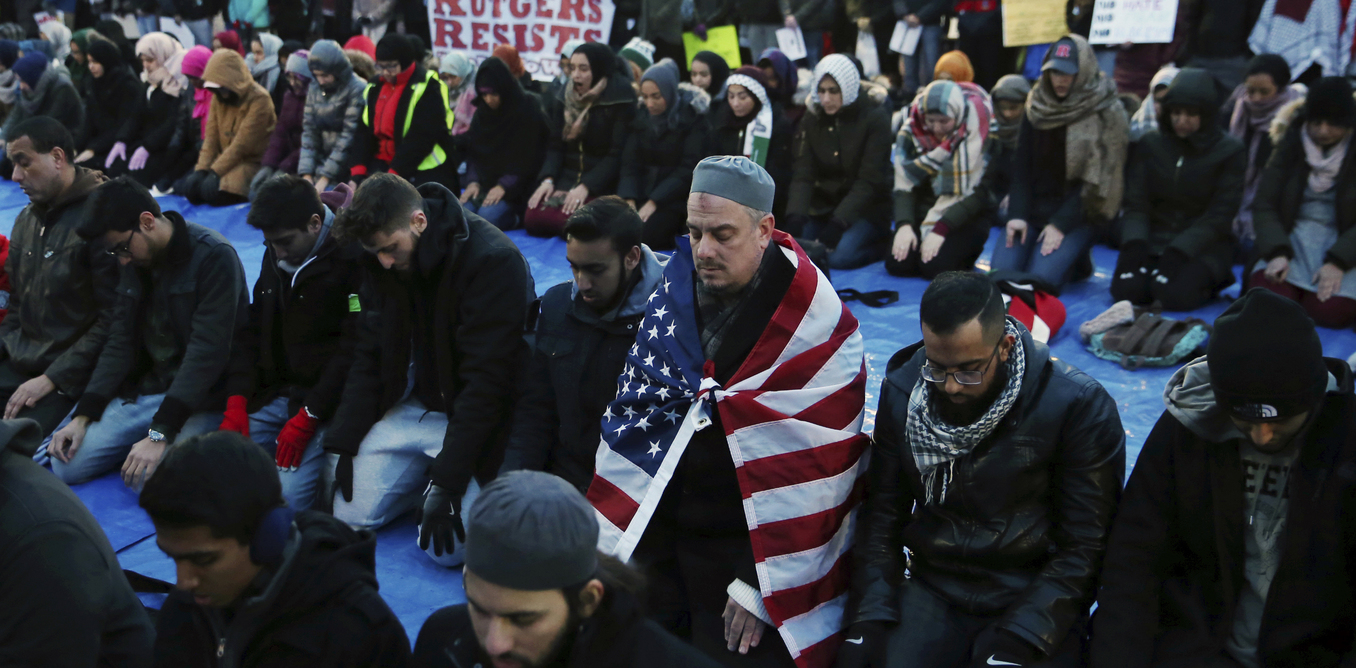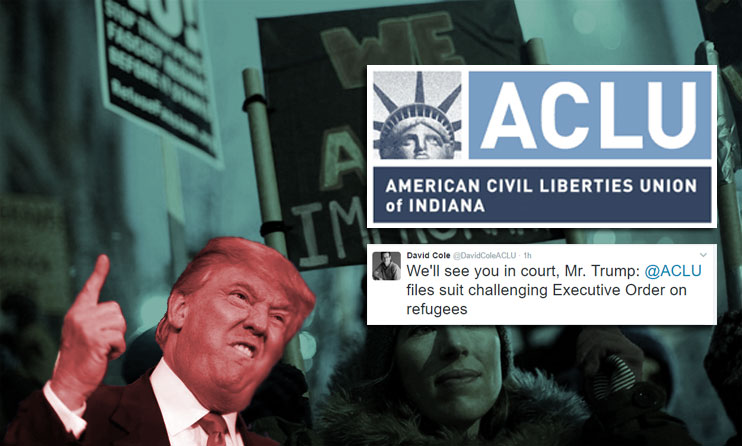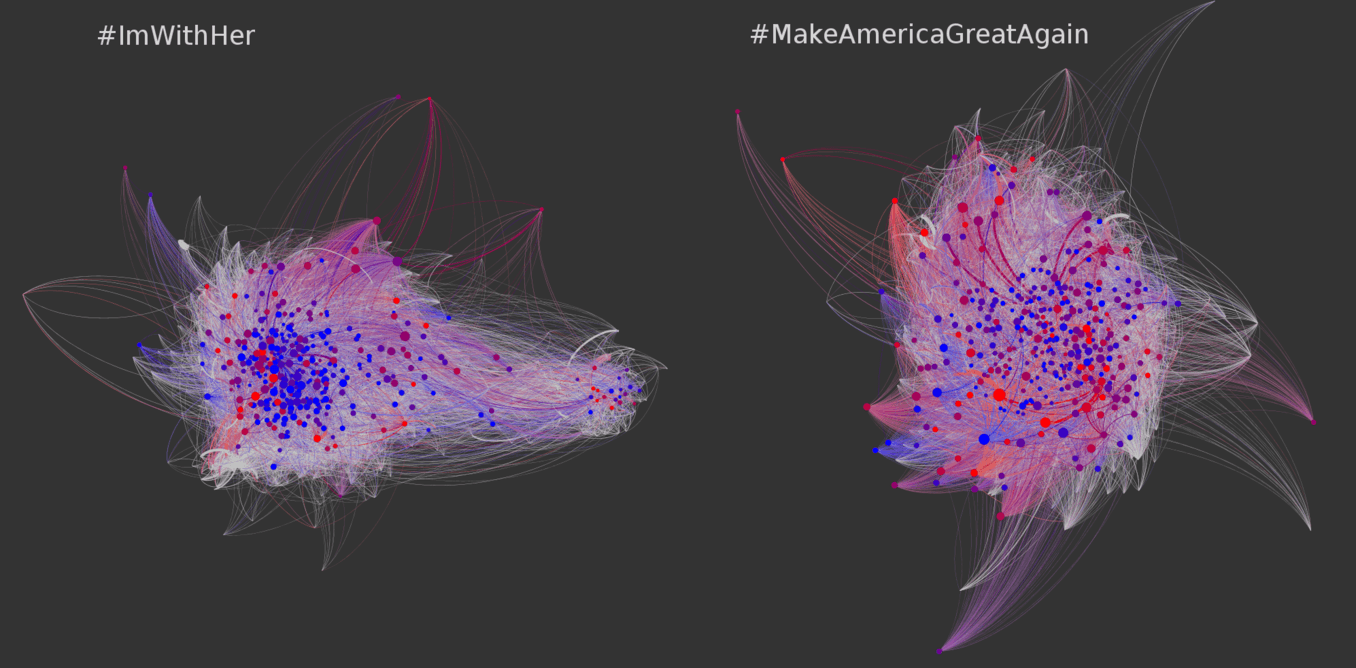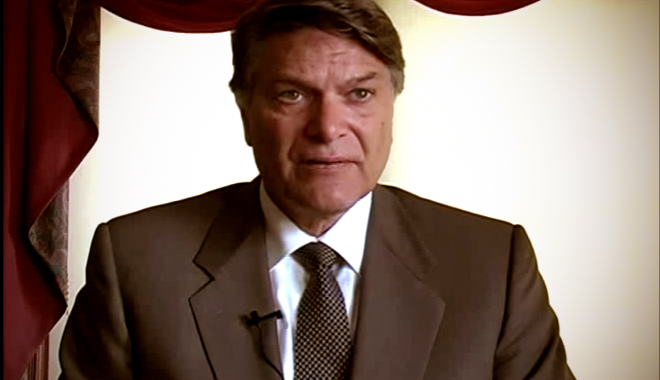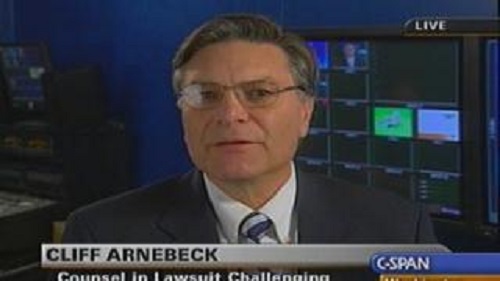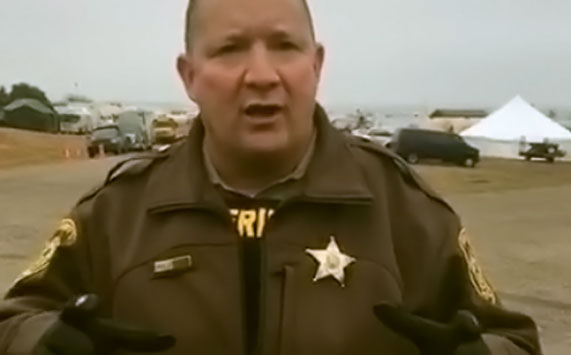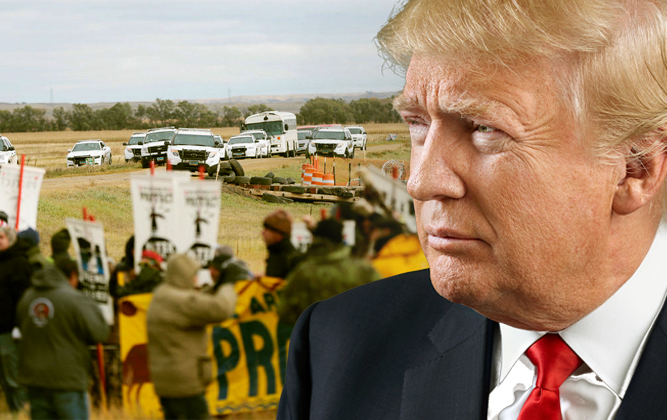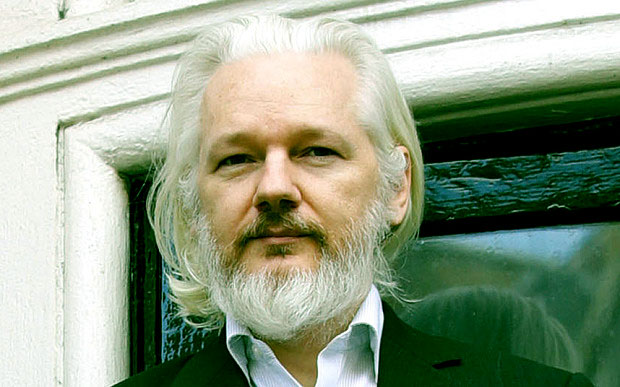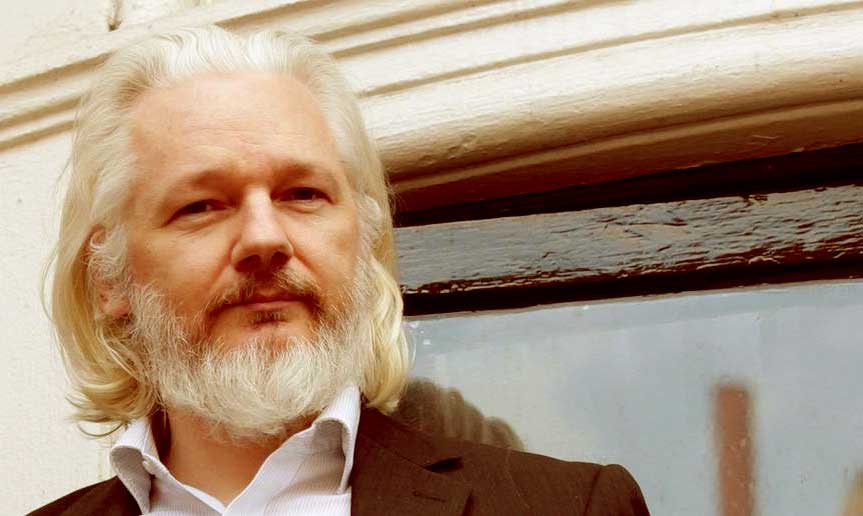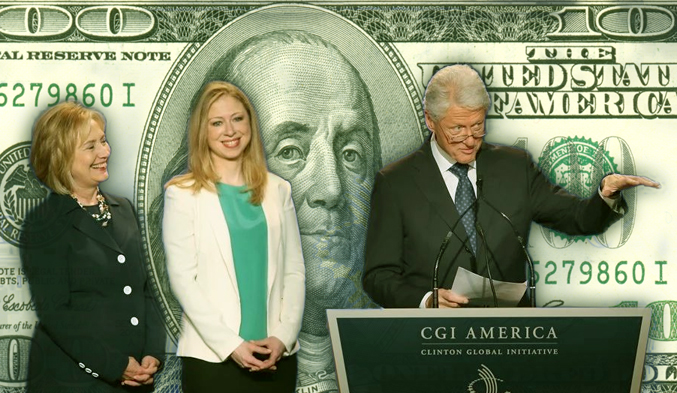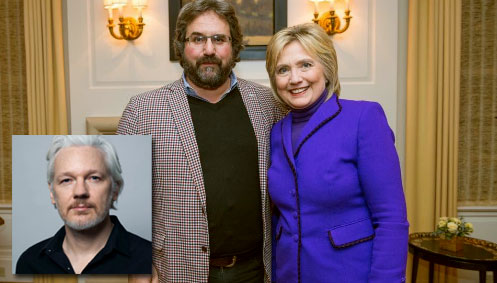A Reddit user managed to get to the bottom of the false accusations of pedophilia against Julian Assange and it’s straight from Hillary Clinton’s desk
A few days ago, the Ecuadoran embassy in London decided to cut off Julian Assange’s internet access for unknown reasons, but rumors quickly spread regarding an allegation that he had been sending naked photos of himself to an 8-year-old girl through a dating site and that he had an open investigation against him by the Royal Bahama Police Force (RBPF) regarding the matter. The claim is absolutely false and, as it turns out, looks to have been fabricated by a contracted company named Premise Data Corporation in San Francisco, according to a very curious reddit user.
The allegation that Assange was being investigated, and the story that went along with it, broke through Daily Kos, a website where anyone can sign up and post articles related to politics. The article has since been deleted and replaced with a message saying “I’ve deleted the post because the evidence was fabricated.” And, as it turns out, Buzzfeed helped to prove that the allegation was not true when they contacted the RBPF and were told that no investigation exists by its assistant commissioner, Stephen Dean, who also said the RBPF was given information about the case, but that no complainant had ever followed up on it.
So then, where did this story come from?
The origin of the story can be traced to Premise Data Corporation, the CEO of which who is a close friend of Hillary Clinton, as redditors discovered. Premise is a global intelligence operation (aka spies) harvesting and harnessing big data, a private corporation based in San Francisco, and whose street address happens to be the same address that dating website Todd and Clare uses.
Todd and Clare had put out a press release on October 11th claiming Assange had approached them about being the ambassador to their anti-rape campaign promoting their KATIA software in June 2016, but had since used the website to lure an 8-year-old girl into performing sex acts. Following this release, the United Nations Global Compact group, which T&C had recently joined in an effort to promote gender equality internationally, dropped T&C citing misuse of both the UNGC logo and reporting procedure, along with violating UNGC’s Integrity Measures, according to UNGC’s Communications Chief Carrie A. Hall in an article from Buzzfeed today. T&C had aligned themselves with the United Nations in order to “bluewash” their brand, or use the UN affiliation to boost sales around the world. But now it looks like they had done it to smear Assange’s name.
Basically, Todd and Clare tried to make it look like the lies they were spreading about Assange came from an official United Nations desk. But it gets worse.
In another press release from February 2016, T&C explains how their KATIA system works, and it sounds just like something a government intelligence organization like the NSA would use to find terrorists, complete with facial recognition software and background checks. T&C says they use this technology to weed out sex offenders and get their female customers the best matches possible.
T&C Network Solutions, the official name of Todd and Clare Hammond’s dating website, may actually be a front organization for Premise. The site claims to have over 40,000 female users, according to their blog, but if you ask anyone you know, nobody has ever even heard of T&C. Since they share the same address and are in the same industry, it wasn’t too far of a stretch to assume there may be something fishy going on, so reddit user sf-78lXQwy_7 decided to look a little deeper. Low and behold, the CEO and founder of Premise, David Soloff, had posted an image of himself with Hillary Clinton back in July this year. Soloff’s linkedin profile is astonishing. A graduate of Columbia University and UC Berkley, Soloff holds a PhD in Economic and Social History and a Bachelors in linguistics, two areas which are perfect for anyone looking to make an impact on the world through intelligence operations.
On the board of directors page, another name linked to Hillary Clinton shows up, Larry Summers. Summers is a Harvard professor, and former president of the university, who now is next in line to be Treasury Secretary under Clinton’s inevitable presidency, a position he held under her husband’s presidency in the 1990s.
Another board member for Premise is Antonio Gracias, who also happens to be Hillary’s campaign bundler. But what’s most obvious to the link between Hillary and the false accusation from T&C is that Larry Summers is Center for American Progress was founded by John Podesta, whose emails had been hacked and are currently being leaked by Wikileaks. (And George Soros funds the Center).
Further investigation by Assange’s defense team yielded a thorough report of their findings on T&C as a business, saying, “It is our conclusion that T&C Network Solutions exhibits the characteristics of a highly suspicious and likely fabricated business entity.” They go on to note that no official records exist for T&C Network Solutions, none of the phone numbers associated with the organization were operational, the social media profiles for the company are all followed by zombie accounts (aka fake profiles) to inflate its presence, the first capture on Archive.org for the site is in October 2015, user profile pics on the site were clearly scraped from the web and altered slightly to avoid reverse image searches, the woman listed as the domain’s registrar doesn’t seem to exist in relation to Todd and Clare, and probably the most damning piece of evidence of it all: Todd and Clare themselves don’t seem to exist either.
Today, Wikileaks has claimed it was Secretary of State John Kerry who pressured Ecuador into cutting off Assange’s internet, to which Kerry hasn’t commented on and other members of the White House have denied.
A full list of relative sources for uncovering this smear against Assange is below:
=============================================================================================
a00006 – Julian Assange Fake Paedophilia Case Archives – Last Updated 10/19/16 4:49am CST
=============================================================================================
//////////////////////////////////////////////////////////////////////////////////////////////////////////////////////////////
For Researchers – DO NOT CLICK SHADY LINKS ESPECIALLY DISCORD – THIS IS FOXACID – THEY CAN FIND YOUR LOCATION WITH IT
ARCHIVE and Read the archive instead – [Info from 4chan so take with a grain of salt]
//////////////////////////////////////////////////////////////////////////////////////////////////////////////////////////////
> Wikileaks Report – INVESTIGATION: T&C Network Solutions and ToddAndClare.com
Summary: Shows steps taken to make it seem like ToddAndClare.com to seem like a legitimate company. Acutally a shell for an entity.
http://archive.is/1fgVJ – Last Updated 10/19/16 12:31am CST
> 4chan.org /pol/ Proof of collusion connection with PAC or HRC
Summary: 4chan.org /pol/ report linking T&C to HRC to frame Julian Assange for Paedophilia
http://archive.is/sVsNF – Last Updated 10/19/16 1:16am CST (thread #1)
https://archive.is/tJ1Np – Last Updated 10/19/16 4:33am CST (thread #3?)
> Reddit Research Team posts
Summary: Research of collusion, with explaination of methodology
>https://archive.is/YQbcq – Last Updated 10/19/16 1:42am CST
https://archive.is/MIZnh – Last Updated 10/19/16 2:44am CST
https://archive.is/TfzuQ – Last Updated 10/19/16 3:23am CST
> Wikileaks Report – Todd and Clare emails to Julian Assange
Summary: T&C offered Julian Assange $1,000,000 for a “Commercial” for T&C and other implications
https://archive.is/UEOj7 – Last Updated 10/19/16 12:31am CST
> Wikileaks Report – Background and Documents on Attempts to Frame Assange as a Pedophile and Russias spy
Summary: Summary and timeline of steps taken by 3rd parties, in detail, to frame Julian Assange under false allegations to get him out of hiding.
https://archive.is/cRlE1 – Last Updated 10/19/16 12:31am CST
> Physical Location of T&C
Summary: Physical location T&C is connected as an entity of the Premise Data Corporation. Shows address and map of location.
http://archive.is/AVxwe – Last Updated 10/19/16 12:34am CST
> David Soloff’s Twitter page (various connections)
Summary: Founder of Premise Data Corporation, personal friend of HRC
http://archive.is/HbvAo – Last Updated 10/19/16 12:38am CST
https://archive.is/491KD (date of connection) – Last Updated 10/19/16 12:38am CST
https://archive.is/dEwtl (package from feed) – Last Updated 10/19/16 2:25am CST
https://archive.is/2MHuq (connection) – Last Updated 10/19/16 2:25am CST
Post – #1 of 4
////////////////////////////////////////////////////////////////////////////////////////////////////////////////////////////////////////////
New Post Break
////////////////////////////////////////////////////////////////////////////////////////////////////////////////////////////////////////////
> Premise Data Corporation team page
Summary: Shows founder “David” and his team in connection to PDC
http://archive.is/3Zz11 – Last Updated 10/19/16 12:38am CST
> Americanprogress.org profile on Lawrence H. Summers
Summary: Lawrence is connected to David Soloff and Super PACs linking them to DNC and HRC. Podesta founded the Center for American Progress.
http://archive.is/a7XP9 – Last Updated 10/19/16 12:40am CST
> Yamiechess.com, trafficsail.com, and findingmeg.com
Summary: All connected to T&C servers
https://archive.is/lHUge – Last Updated 10/19/16 1:14am CST
https://archive.is/tq9Wd – Last Updated 10/19/16 1:14am CST
https://archive.is/OfcRt – Last Updated 10/19/16 1:14am CST
> Wikileaks connection to physical location and plot
Summary: Tweet and Picture of Building from location of headquarters of the front or PAC behind the allegations or plot
http://archive.is/Z3q1H – Last Updated 10/19/16 1:29am CST
> LoopNet plot listing address and location for “10685 Hazelhurst Houston, TX 77043”
Summary: LoopNet plot listing for Industrial location of headquarters of the front or PAC behind the allegations or plot
http://archive.is/bwH9k – Last Updated 10/19/16 1:29am CST
> White House Visitation Records
Summary: Visitation records of civilians meeting those in the White House. Archival made to preserve incase of tampering.
http://archive.is/mV6MU
Post – #2 of 4
////////////////////////////////////////////////////////////////////////////////////////////////////////////////////////////////////////////
New Post Break
////////////////////////////////////////////////////////////////////////////////////////////////////////////////////////////////////////////
> Equador statement
Summary: This is the “Official” statement by Equador and the reason for cutting Julian’s connection
https://archive.is/wrQA4 – Last Updated 10/19/16 3:35am CST
> Datagovus.com – Premise Data Corportation
Summary: Buisness listing of PDC and its D.B.A. with mailing details and such. Connections include CA and TX address.
https://archive.is/qJNJq – Last Updated 10/19/16 3:35am CST
> Noam Chomsky on Date Rape – KATIA PROJECT
Summary: Connection of Noan Chomsky and T&C with the KATIA Project. Tool connection with T&C.
https://archive.is/NlRre – Last Updated 10/19/16 3:35am CST
> LinkedIn – Alexandra Graboski
Summary: Profile of face for T&C. Connection now to Assistant at McGowan / Rodriguez Management. Location in LA, Ca.
https://archive.is/fEcxA – Last Updated 10/19/16 3:35am CST
> Twitter Mobile – David Soloff
Summary: David threatening control and use drone on civilians. Connections possibly to US GOVT.
https://archive.fo/7UkQV – Last Updated 10/19/16 3:35am CST
> United Nations Report on T&C (Right click > View Image)
Summary: On June 8, 2016, ToddandClare.com was contacted by a representative of Wikileaks founder, Julian Assange, stating that due to MIT Professor Noam Chomsky’s support in the KATIA Project, Mr Assange was interested in becoming a #HeForShe Ambassador for KATIA
https://archive.is/1gm2W – Last Updated 10/19/16 3:35am CST
https://archive.is/1gm2W/c557e189a83124805824e2bb4a9f05aea8005877.png (direct link to pic) – Last Updated 10/19/16 3:35am CST
Post – #3 of 4
////////////////////////////////////////////////////////////////////////////////////////////////////////////////////////////////////////////
New Post Break
////////////////////////////////////////////////////////////////////////////////////////////////////////////////////////////////////////////
> Bipartisanreport.com – Smear piece on Julian Assange
Summary: BR collusion with T&C shadow company with connection to DNC and HRC to Detain Julian Assange on false pretenses.
https://archive.is/kjeQG – Last Updated 10/19/16 4:49am CST
> Buzzfeed.com – Smear piece on Julian Assange
Summary: Buzzfeed collusion with T&C shadow company with connection to DNC and HRC to Detain Julian Assange on false pretenses.
https://archive.is/bY08w – Last Updated 10/19/16 4:49am CST
> Lexi Graboski – About Page
Summary: Background and details in acting/modeling for Lexi (T&C Actress)
https://archive.is/OGTYq – Last Updated 10/19/16 4:49am CST
> Various Unsorted Connections, Pictures, And Shared IPs w/ T&C
Summary: Various archived pictures showing connections and shared IP’s
https://archive.is/Z39Re – Last Updated 10/19/16 2:29am CST
https://archive.is/VsiWt – Last Updated 10/19/16 2:29am CST
https://archive.is/0eo7X – Last Updated 10/19/16 2:29am CST
http://archive.is/NHJ96 – Last Updated 10/19/16 2:29am CST
https://archive.is/SgMYc – Last Updated 10/19/16 2:38am CST
https://archive.is/FhSuN – Last Updated 10/19/16 2:41am CST
https://archive.is/KcstU – Last Updated 10/19/16 2:43am CST
https://archive.is/MhMvi – Last Updated 10/19/16 2:43am CST
https://archive.is/e25WJ – Last Updated 10/19/16 2:43am CST
https://archive.is/keDw6 – Last Updated 10/19/16 2:48am CST
https://archive.is/ntkTI – Last Updated 10/19/16 2:57am CST
http://archive.is/G6XKs
http://archive.is/LCZvq
http://archive.is/mvmkl
http://archive.is/XE37V
Post – #4 of 4
=============================================================================================
![]()

